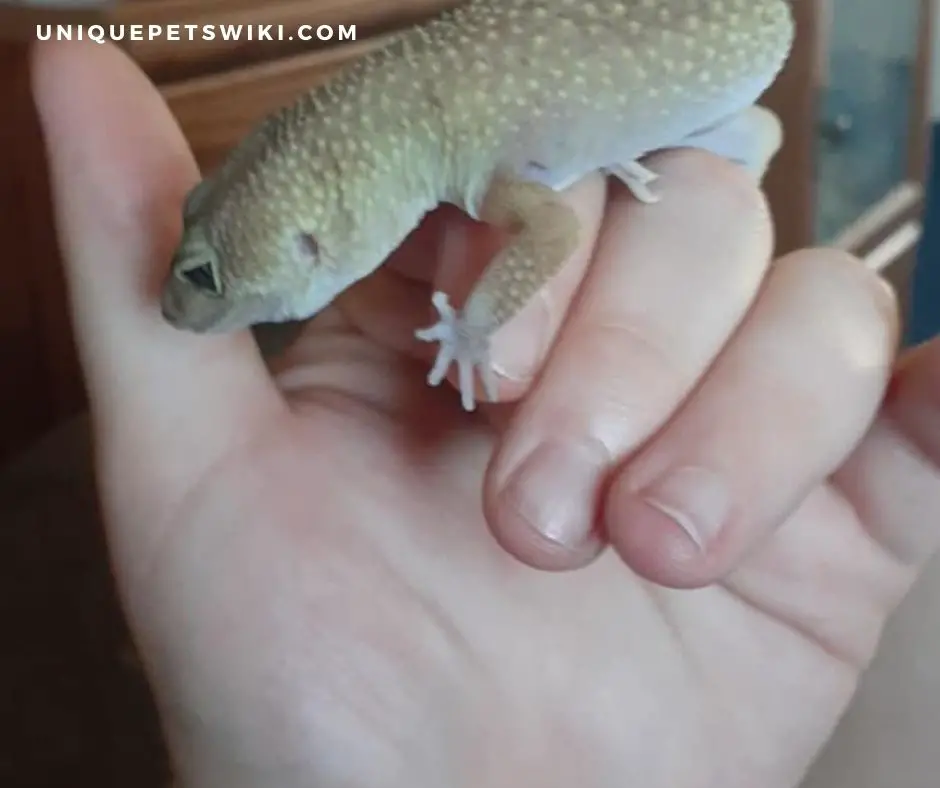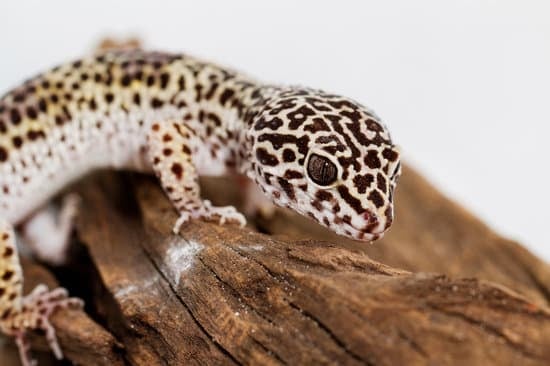Dealing with leopard gecko bites can be a bit tricky.
People usually resort to looking up online tips and tricks as to what to do whenever their pets bite them for the first time!
In this feature, we will learn more about leopard gecko bites – what causes them to bite, and what you should do once it happens.
Let’s get right into it!
Contents
Do Leopard Geckos Bite Their Owners?
All things considered, leopard geckos can be ideal pets. They are quite easy to tame, are relatively decent-sized, and are gentle creatures. This makes them perfect for individuals who are pet parents for the first time.
Although it’s known to be rare for lizard species to bite, some leopard geckos can still bite their owners for various reasons. It’s also useful to know that leopard gecko bites rarely draw out blood.
But don’t let this reason hinder you from getting a pet such as a gecko!
Do Leopard Gecko Bites Hurt?
Generally speaking, leopard gecko bites do not hurt. They are somewhat less painful compared to other species such as dogs and cats. Their bites are almost comparable to a pinch, and this is because even adult leopard geckos have relatively small teeth.
Now, before you go ahead and extend your hand to your pet aggressively, do know that there are some leopard gecko bites that can cause bleeding, especially if you try and pull them off while they’re biting you. It’s best to take precautionary measures once a bite is experienced.
Do Leopard Geckos Bite Cause Harm?
Due to their small teeth and overall docile nature, leopard gecko bites rarely cause any harm. They are known to feast on insects and not puncture your skin. However, it’s still important to understand that just like any other form of pet bite, a leopard gecko bite can still cause bacterial infection.
Leopard gecko bites are also known to be worse once you pull them off as they are renowned for actually biting down hard.

2 Causes For Leopard Geckos Trying To Bite
Since leopard geckos are docile creatures, they rarely bite. Although baby leopard geckos tend to be more skittish and can let out a nibble or two, it still doesn’t make them fearsome creatures.
However, as a pet parent (or as a potential one), it’s crucial to understand why your leopard gecko is trying to bite you. This is so you can be equipped and be prepared to handle potential bites.
You know that a gecko leopard might go for a bite if you see them raise or wave their tail whenever you try and reach out to them. Should such behaviors be observed, it’s best to avoid picking them up initially.
Leopard Geckos Defend When They Feel Threatened
This is probably common for any type of animal, so it shouldn’t come off as a surprise that leopard geckos defend themselves when they feel threatened.
Some triggers of leopard geckos being threatened are when you make sudden movements, or catch them by surprise. Common indicators that a gecko is surprised is tail movement or being skittish. When such actions are noticed, it’s best to take caution.
Your Leopard Geckos Get Hungry
If you’re a first-time pet parent, then it’s important to know that your pets can get all giddy when they are deprived of food, or when they get hungry. For leopard geckos, they get a bit excited when they are in the mood for food.
Another example of leopard geckos biting when they are hungry is when you try and place your hand near their bowl or feeding area and they mistake it for food. It’s best to be careful when reaching out so you don’t experience the nibble.
What Should You Do When A Leopard Gecko Bites?
On the rare occasion that a leopard gecko bites you, there are two things you can always consider as a general rule of thumb:
Keep Holding Your Leopard Gecko When It’s Biting You
It’s a common response from humans to pull their leopard gecko away the second it bites them. This is actually bad practice, as it can cause skin tear (which is highly possible since geckos are known to chomp down hard despite them having small teeth).
The best response to a leopard gecko currently biting you is to continue holding them or placing them in their respectful tanks or areas. This could be a good indicator that it’s time for them to let you go and be at one with their natural moving space.
Disinfecting The Bitten
Should the rare instance of a leopard gecko bite occur to you, it’s common practice to wash the affected area with water and anti-bacterial soap. Simply put, you treat it like any other wound.
Aside from anti-bacterial soap, you can also resort to using hydrogen peroxide and a band-aid to help treat leopard gecko bites.
How To Avoid Leopard Geckos From Biting?
Now, even though leopard geckos rarely bite, there’s still a good chance that they might go for a quick nibble, especially if it’s your first time meeting them. Here are some steps to avoid getting bitten by your new or old pet:
Don’t Try Handling Your New Leopard Gecko Right Away
Pretty much just like with any animal, it’s important to refrain from handling your new leopard gecko. It actually takes time to build trust with your new pet, and many people fail to recognize this. Once you’ve established confidence that your leopard gecko is comfortable with you, you may proceed with petting them.
Now, I can almost hear you thinking, “When should I handle my pet?”
First off, it’s important to understand that patience is key. When you first bring it home, try and let them adjust to their new habitat first. Give them time to settle in. They usually need 4 to 6 weeks to trust you.
Since you are also much bigger than your pet leopard gecko, who knows what they may think of you? They may view you as a predator, or someone meaning harm to them.
One of the best approaches to handling them is being calm and collected. It helps avoid being bitten due to sudden movements.
It’s a known best practice to let the leopard gecko climb into your hand instead.
When you do however pick it up, it’s crucial to make sure that you support its whole body to avoid falling.

Don’t Try Handling When It’s Giving You The Signs
I know, it can be hard not to pet or handle your leopard gecko especially when you see them for the first time. But not every bite is from new owners. Some seasoned pet parents still encounter nibbles.
Luckily, there are some obvious signs that a leopard gecko bite is likely to happen.
- When your leopard gecko is shedding
- Your leopard gecko is hissing, chirping, screaming, and wagging its tail from side to side quickly
- Your pet starts to slyly hide away
- Aggressive stance and posture
Each sign has a different indication.
For example, chirping could mean that they are unhappy with their current situation. An aggressive stance and posture can mean that they feel threatened and can attack or bite at any time.
Once these signs start to appear, it’s best to refrain from handling them. You can let them be in peace for a short while, and come back after to see if they’re up for a bit of petting or handling.
Don’t Scare Your Leopard Gecko
Your leopard gecko can indeed be rattled by sudden jolts of movement or probably even sound, so it’s best to tread lightly when handling them. It’s highly recommended to pick them up slowly or handle them with care whenever you feel the urge to pet them. This is considered one of the best practices to avoid getting bitten.
Another useful tip to remember is to refrain from playing with or tugging your leopard gecko’s tail. This has been widely considered a general rule for most pets.

Be careful while handling or feeding your leopard gecko
I know it can be exciting to hold your pet and feed them! But it’s essential to have a sense of understanding of how your leopard gecko reacts. It helps to be gentle with your movements, and not give out hints that you are violating their space or attacking them.
One of the best practices you can always consider is starting a sort of bonding with your pet the first time you bring it to your home.
Some owners sit on the floor with their pet leopard gecko in one hand and slowly switch them to the other hand. This helps establish a sort of trust between you and your pet.
Conclusion
Owning a pet is all fun and games until you have to deal with a few bites and scratches! Luckily for leopard geckos, their bites are less lethal and painful. Just avoid all the trigger points of getting bitten and you and your pet should have a wonderful time together!
